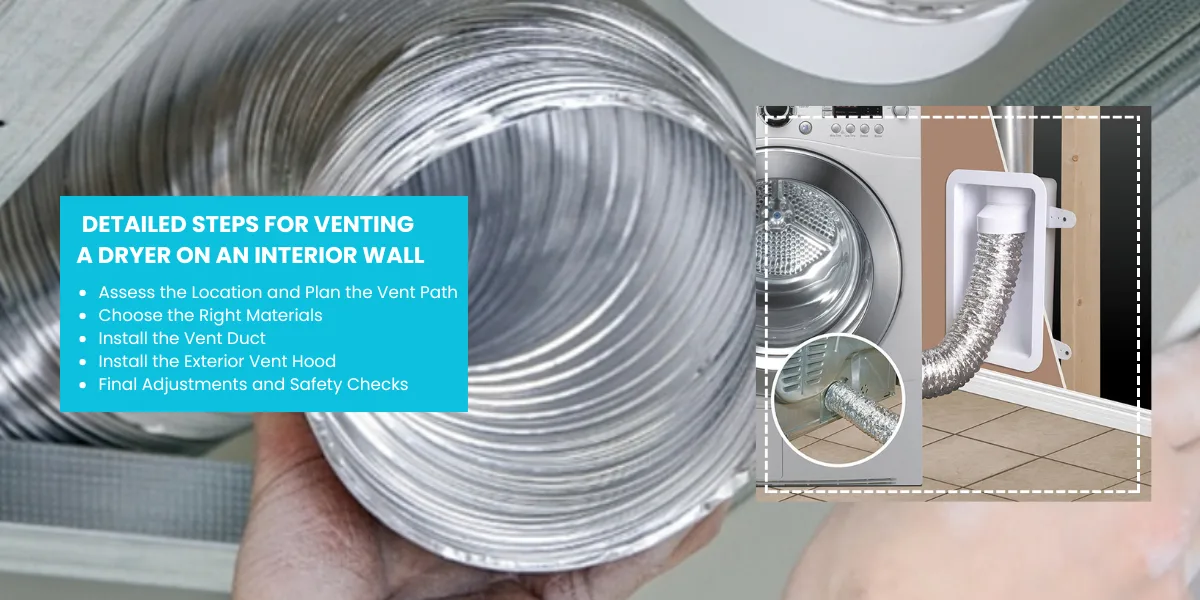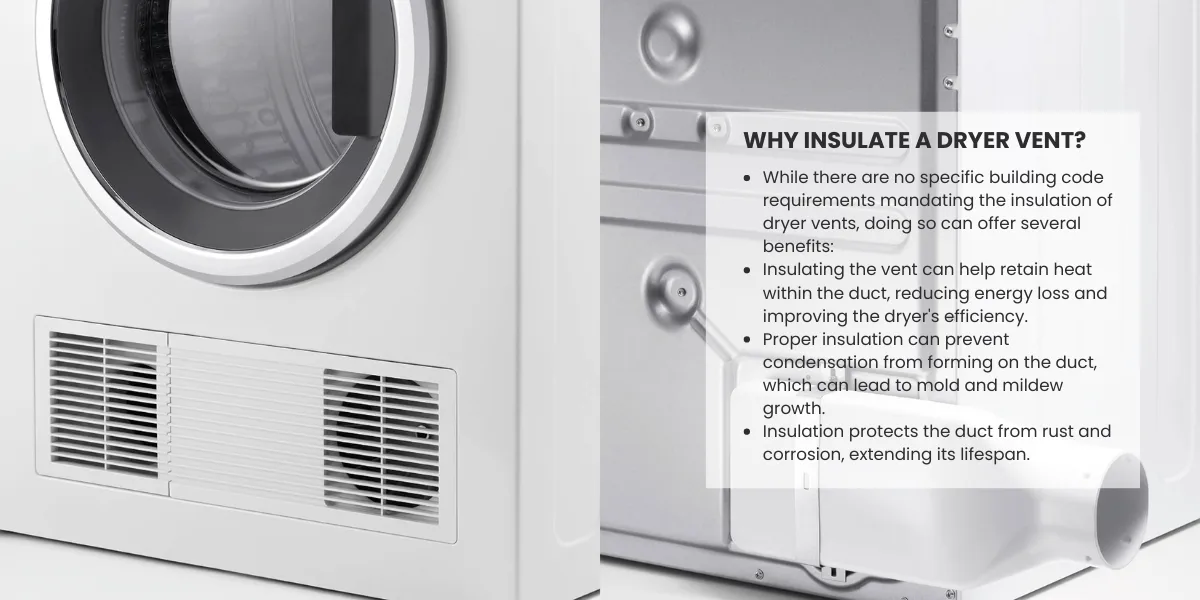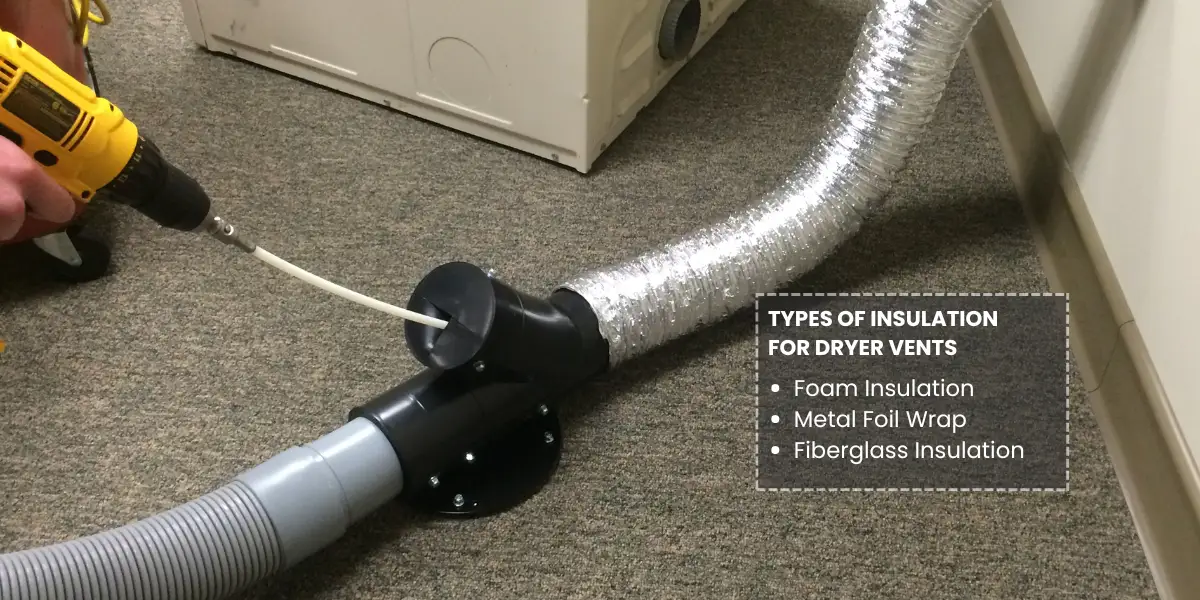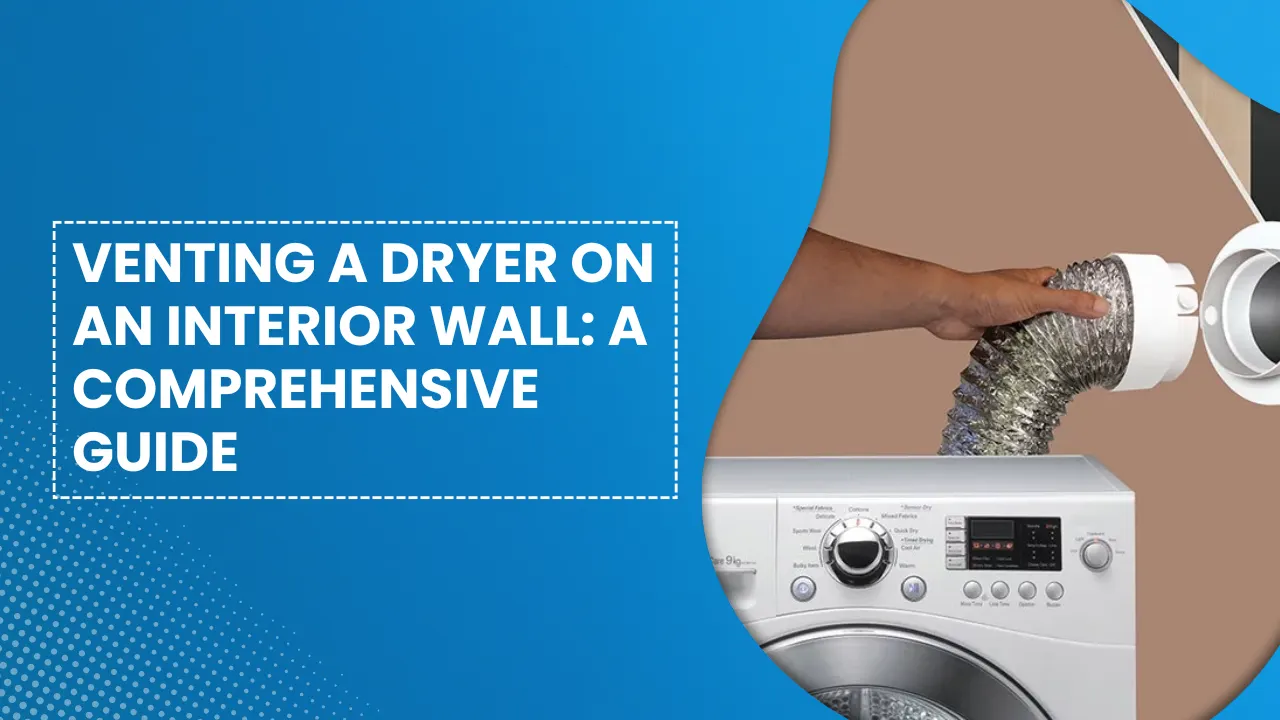Venting a dryer on an interior wall can be a challenging task, especially when the laundry room is located in the middle of a house. Proper installation is crucial to ensure safety, efficiency, and compliance with building codes.
Dryers are essential appliances in many homes, but improper venting can lead to serious issues such as reduced efficiency, increased energy costs, and even fire hazards.
When a dryer is located away from an exterior wall, venting it properly becomes more complex. This situation often arises in homes where the laundry room is centrally located, making it necessary to vent the dryer through an interior wall to the outside. Understanding the correct procedures and materials for this task is critical to ensuring the safe and effective operation of your dryer.
Detailed Steps for Venting a Dryer on an Interior Wall

Here are some detailed steps that will help you vent a dryer vent.
Assess the Location and Plan the Vent Path
Determine the shortest and most direct path from the dryer to the exterior wall. This minimizes the length of the ductwork, reducing the risk of lint buildup and improving efficiency.
Identify any obstacles such as plumbing, electrical wiring, or structural elements that may interfere with the vent path.
Choose the Right Materials
Use a 4-inch rigid metal duct for the vent. This type of duct is durable, easy to clean, and minimizes lint accumulation compared to flexible plastic or foil ducts.
If the duct passes through unconditioned spaces, such as attics or basements, insulate the duct to prevent condensation.
Install the Vent Duct
Use a hole saw to cut an opening in the interior wall and the exterior wall for the vent. Ensure the openings align perfectly to avoid unnecessary bends in the duct.
Attach the duct to the dryer’s exhaust outlet using vent clamps or foil tape. Avoid using screws, as they can trap lint and create fire hazards.
Extend the duct through the interior wall to the exterior vent hood. Secure the duct with brackets to prevent sagging, which can lead to lint buildup and reduced airflow.
Install the Exterior Vent Hood
Install the vent hood on the exterior wall, ensuring it is slightly above the ground to prevent water and debris from entering.
Use caulk to seal the edges of the vent hood to prevent air and moisture from entering the home.
Final Adjustments and Safety Checks
Carefully move the dryer back into place, ensuring the vent duct is not kinked or crushed.
Turn on the dryer and check for proper airflow at the exterior vent hood. Ensure there are no leaks or obstruction.
Best Practices for Insulating a Dryer Vent on an Interior Wall
Proper insulation of a dryer vent, especially when it runs through an interior wall, can significantly enhance energy efficiency, prevent moisture issues, and prolong the life of the ductwork. Here are some best practices to consider when insulating a dryer vent on an interior wall.
Why Insulate a Dryer Vent?

While there are no specific building code requirements mandating the insulation of dryer vents, doing so can offer several benefits:
- Insulating the vent can help retain heat within the duct, reducing energy loss and improving the dryer’s efficiency.
- Proper insulation can prevent condensation from forming on the duct, which can lead to mold and mildew growth.
- Insulation protects the duct from rust and corrosion, extending its lifespan.
What type of insulation is best for dryer vents?
Choosing the right type of insulation is crucial to enhancing energy efficiency and preventing moisture issues. Here are the recommended types of insulation for dryer vents:
Types of Insulation for Dryer Vents

Foam Insulation: Foam insulation is affordable and easy to work with, making it a popular choice for dryer vents. It is effective at providing the necessary thermal resistance without requiring extensive installation efforts.
Metal Foil Wrap: Metal foil wrap is flexible, movable, and requires minimal DIY effort. It is particularly useful for dryer vents because it can easily conform to the shape of the duct.
Fiberglass Insulation: It can be a cost-effective option if you have leftover fiberglass insulation from other projects. Fiberglass insulation provides good thermal resistance and can be easily wrapped around the vent.
Signs Your Dryer Vent Needs Insulation
If you suspect that your dryer vent may need insulation, there are several common signs to look out for. Proper insulation can enhance the efficiency of your dryer and prevent potential issues such as moisture buildup. Here are the most common signs indicating that your dryer vent might need insulation: Image ( Bullets )
Condensation Build-Up
If you notice condensation forming in or around your dryer, it may indicate that the vent is not adequately insulated. This can happen when the warm air inside the vent meets the cooler air outside, causing moisture to condense.
Excessively Hot Dryer Exhaust
A dryer exhaust that is extremely hot to the touch can be a sign that the vent is not insulated properly. Insulation helps maintain a stable temperature within the vent, preventing it from getting too hot and reducing energy waste.
Clothes Not Drying Properly:
If your clothes are not drying as they should, it could be due to inadequate insulation. Proper insulation ensures that the hot air efficiently exits the dryer, aiding in the drying process. If the vent is clear of debris but clothes still take longer to dry, adding insulation might resolve the issue.
Summary
Venting a dryer on an interior wall requires careful planning and execution to ensure safety and efficiency. The process begins with selecting the right location for the vent outlet, ideally as close to an exterior wall as possible to minimize the length of ductwork.
Using high-quality materials, such as rigid metal ducts, is crucial for durability and heat resistance. The vent path should be as short and straight as possible to reduce lint buildup and maintain efficient airflow.
Installation involves measuring the distance from the dryer to the exterior wall, cutting openings in the interior and exterior walls, and securely connecting the duct sections with clamps or foil tape. It’s important to avoid sharp bends and long vertical runs, as these can impede airflow and increase the risk of lint accumulation.
Regular maintenance, including cleaning the lint trap and inspecting the vent system, is essential to prevent fire hazards and ensure optimal dryer performance. For those who prefer professional assistance, Steam Express offers expert services in dryer vent installation and maintenance, ensuring that your system operates safely and efficiently.


